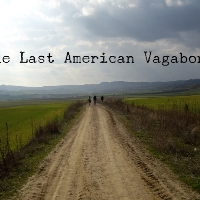Joining me today is Brian Festa, founder of We The Patriots USA, a non profit currently suing both the local and federal EPA, as well as numerous Ohio officials such as Governor DeWine, regarding the mishandling and apparent coverup of the chemical disaster in East Palestine, Ohio. The organization is also involved in numerous other important lawsuits, and Brian himself has been fighting for important concepts such as vaccine exemptions since at least 2020 after one of his children suffered a vaccine injury following a flu vaccine. Brian is here today to discuss the current lawsuit pertaining to the East Palestine and why this is so important to the safety of the residents therein.
All Video Source Links Can Be Found Here At The Last American Vagabond: https://www.thelastamericanvagabond.com/whitney-webb-interview-cia-mossad-linked-surveillance-systems-quietly-installed-throughout-the-us
Want to send a check to support TLAV, or just words of encouragement?
Use our new P.O. box:
Ryan Cristian
1113 Murfreesboro Rd. Ste 106-146
Franklin, Tn 37064
Get a TLAV "Question Everything" T-Shirt or Sticker at:
https://truthclothing.io/collections/tlav
Support TLAV through Autonomy:
Join Autonomy:
https://www.universityofreason.com/a/29887/QZmKjVCA
Ryan Cristián’s Objectivity Course:
https://marketplace.autonomyagora.com/objective-research
Richard Grove’s Course:
https://www.universityofreason.com/a/2147526145/QZmKjVCA
Like What You See? Help Us Stay People Funded:
https://tlavagabond.substack.com/
https://www.thelastamericanvagabond.com/donations/donation-form/
https://www.subscribestar.com/the-last-american-vagabond
https://cash.app/$TLAVagabond
https://www.buymeacoffee.com/tlavagabond
Bitcoin Donations: 3HybuDuvH4x5uJHemgc7EW4ms2nz3F8Gah
Ethereum Donations: 0x5e68B8984d9D8167dAf890588a7037Ae6Cc87d4b
Litecoin Donations: MX3T2kYvzfD4mNS4VNSyXFgY4abhUJC5ff
Bitcoin Cash Donations: qqsef23980qu5nlk2dj7s7ezwedl4fmy2gl2mxp9dp
Support The Last American Vagabond by Subscribing here:
http://www.feedblitz.com/f/?Sub=906867
#TLAVPirateStreams #TheLastAmericanVagabond #BrianFesta
"Copyright Disclaimer Under Section 107 of the Copyright Act 1976, allowance is made for "fair use" for purposes such as criticism, comment, news reporting, teaching, scholarship, and research. Fair use is a use permitted by copyright statute that might otherwise be infringing. Non-profit, educational or personal use tips the balance in favor of fair use.”

www.newstarget.com














